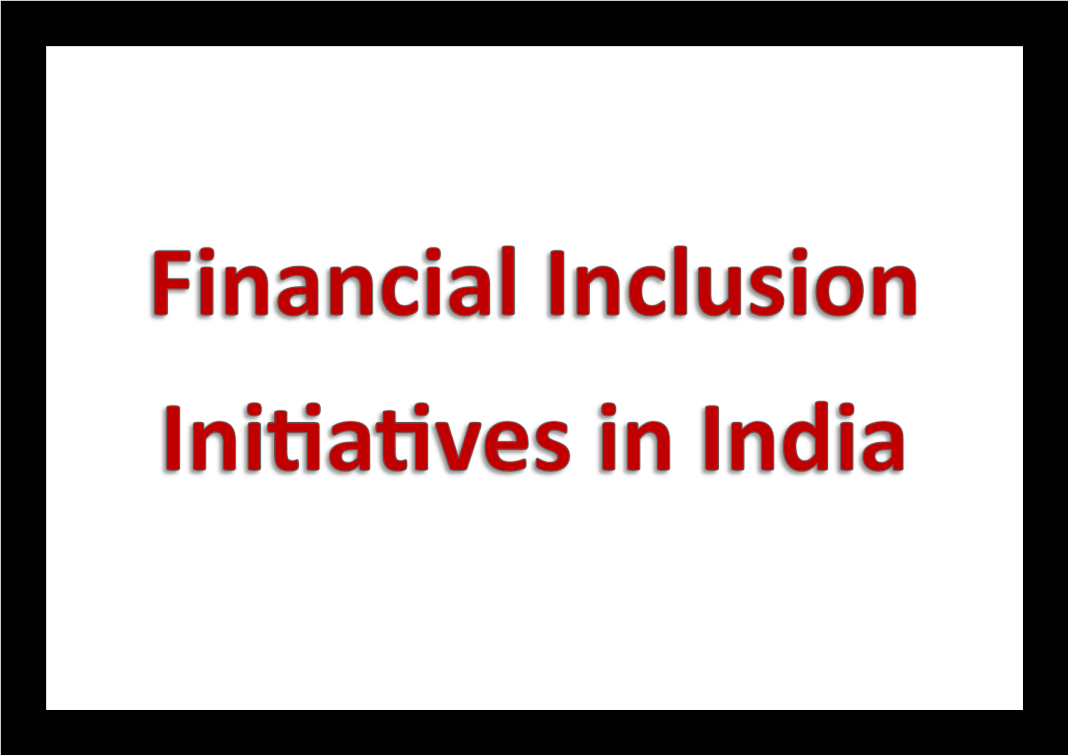All across the world, the governments are in a mission to promote financial inclusion. Providing basic financial products to all sections of the society is a development goal.
What is financial inclusion?
Financial inclusion is the process of providing financial services and products to the unserved and the underserved. It indicates the proportion of the total population, connected to the formal financial system in an economy. Financial inclusion is now considered essential for inclusive development. For the promotion of financial inclusion a large number of measures were launched in India since 2005.
Financial inclusion efforts in India
Financial inclusion measures launched in India covers a large number of measures, including the provision of bank accounts, use of technology, appointment of BCs, expansion of branch networks etc. Several institutions supported by the government and the RBI are engaged in financial inclusion drives. Following are the main financial inclusion measures over the last fifteen years.
- Basic Savings Bank Deposit Account (BSBDA): This is the bank account given to the people that include basic banking services and products. Minimum bouquet of products and services were offered under BSBDA, and they include:
- A savings cum overdraft account.
- A pure savings account, ideally a recurring or variable recurring deposit
- A remittance product to facilitate EBT and other remittances, and
- Entrepreneurial credit products like a GCC or a KCC.
- Financial Inclusion Plan (FIP) for the expansion of branch and branchless banking.
- PMJDY: Pradhan Mantri Jan Dhan Yojana.
- Adoption of Business Correspondents (BCs): BCs were allowed to provide banking services in rural areas.
- Promotion of technology for banking and payment: Several technology-based solutions were initiated by the RBI to promote financial inclusion. These include incentivising banks to issue RuPay cards etc, supporting internet banking and mobile banking with regulatory measures. Business Correspondents have to use ICT while delivering products in remote areas. Use of the various payment infrastructure facilities, including the use of UPI is an important component. Payments is an essential banking service like savings and credit. Here, the RBI designed the NEFT and RTGS besides indirectly promoting IMPS, AEPS etc.
- RuPay debit cards were launched in 2012 by NPCI. The RuPay Cards have significantly increased their market share to 60 per cent (603 mn) of the total 1017 million debit cards in the country so far. The card has been provided to the PMJDY account holders.
- Financial Literacy Programme: Financial Literacy Centres were started by commercial banks at the request of RBI to give awareness and education to the public to access financial products. Here, RBI’s policy is that financial inclusion should go along with financial literacy. RBI provides support to Financial Literacy and Credit Counselling Centres (FLCCs).
- Simplified KYC norms: the RBI has simplified KYC regulations, especially for small value clients and transactions. This is because, in a country like India, where documents and identity proof are not with many, it is very difficult to attract them to stricter KYC standards.
- Liberalised branch license scheme: the RBI has launched this step in December 2009. Here, domestic scheduled commercial banks were permitted to freely open branches in tier III to tier VI centres with a population of less than 50,000 subject to reporting. In the North-Eastern states and Sikkim, domestic scheduled commercial banks can now open branches in rural, semi-urban and urban centres with the same liberalised procedure. Similarly, banks were asked to open at least 25 per cent of the total number of branches in unbanked rural centres.
- Kisan Credit Cards (KCC) and General Credit Cards (GCC): Kisan Credit Cards were issued to small farmers to get hassle-free credit from banks. Issue of credit cards to the credit needy people was another component of the RBI’s financial inclusion drive. Under GCC, banks have been asked to introduce general-purpose credit card facilities up to Rs 25,000 at their rural and semi-urban branches for low-income people. The objective of the scheme is to provide hassle-free credit to customers based on the assessment of cash flow without insistence on security, purpose or end-use of the credit.
- Bank -SHG linkage programme.
- Aadhaar based payment infrastructure.
- Direct Benefit Transfer (DBT): The launch of direct benefit transfers through the support of Aadhaar and Bank Account is one of the biggest development that activated and retained people in the newly opened account.
- Liberalised policy towards ATMs and White label ATMs. To expand the network of ATMs, the RBI has allowed non-bank entities to start ATMs (called ‘White Label ATMs’).
- EBT: RBI has encouraged Electronic Benefit Transfer for routing social security payments through the banking channel.
- Unified Payments Interface and the BHIM app: UPI is a payment mechanism built by the NPCI to promote online money transactions. In terms of use and popularity, the UPI has achieved universal acclaim, and now it is rated as one of the best payment devices for the masses in the entire world.
- Expansion of the operations of Small Finance Banks, Payment Banks, NBFC-MFIs, other NBFCs and microfinance institutions.
- Strengthening of Lead Bank Scheme.
*********










